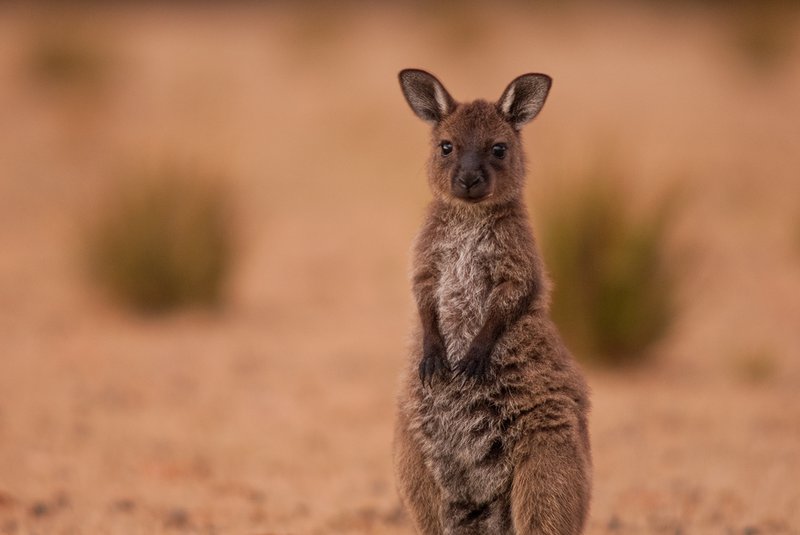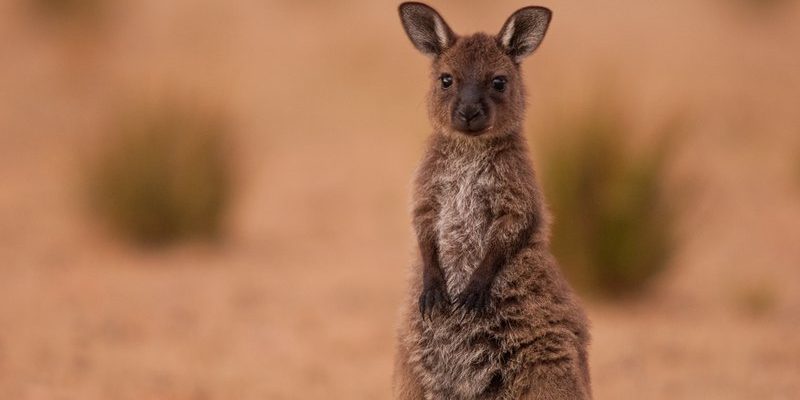
Eastern Grey Kangaroos are not just iconic symbols of Australia; they’re also incredible parents. Imagine carrying your baby in a pouch where they can feel safe and snug while they grow and learn. This nurturing method allows kangaroos to thrive in the wild, ensuring their young develop the skills they need to survive. Let’s hop into the details of how these remarkable creatures raise their young.
The Basics of Kangaroo Reproduction
Kangaroo reproduction is quite remarkable. Eastern Grey Kangaroos usually mate in the spring, a time when the weather is just right for babies to arrive. After a gestation period of about 30 to 36 days, a tiny joey is born. But here’s the catch: this newborn is incredibly small—about the size of a jellybean.
Once born, the joey has to make a significant journey. It crawls up its mother’s belly and into her pouch, where it will spend most of its early life. This pouch acts like a cozy little nursery, keeping the joey warm and protected. It’s fascinating to think about how this unique adaptation shapes their survival in the wild. The pouch isn’t just a safe space; it’s crucial for the joey’s growth and learning in those initial months.
Life Inside the Pouch
Living in a pouch sounds like a dream, right? For the joey, it is! Inside the pouch, the joey latches onto a teat, receiving all the nutrients it needs to grow. The pouch provides a secure environment where the baby kangaroo can develop without the risks of predators or harsh weather.
As the joey grows, it starts to poke its head out of the pouch. This stage is super important. It begins to observe the world around it, learning from its mother and its surroundings. The mother kangaroo is an excellent teacher; she shows the joey what to eat, where to find fresh grass, and even how to communicate with other kangaroos. Honestly, it’s like a mini school right there in the bush!
Weaning and Independence
Eventually, the time will come for the joey to leave the pouch. This transition can be bittersweet. It’s a big step toward independence, marking the end of one phase and the beginning of another. Weaning generally occurs when the joey is around six months old, but they will continue to return to the pouch for comfort and to nurse.
During this weaning phase, the mother kangaroo starts reducing the feeding time. She also introduces her young to solid foods, which they eagerly munch on. Here’s the thing: the mother knows just when to guide her joey toward independence, allowing it to learn self-sufficiency gradually. The early lessons laid within the pouch follow them into adulthood.
Bonding Through Play
You might think raising young in the wild is all work and no play, but that’s simply not the case for kangaroos! Play is a significant part of how Eastern Grey Kangaroo joeys learn vital survival skills. As the young kangaroo starts to gain confidence, it engages in playful sparring with its siblings.
This playful behavior strengthens their muscles and hones their agility, which helps them dodge predators later on. Plus, it’s a great way for them to bond with each other and their mother. Watching a group of young kangaroos bouncing around, practicing their kicks and jumps, is a joyful sight that highlights their spirited nature!
Mother’s Role as a Protector
While the pouch is a safe haven, the real world can be dangerous. Here’s where the mother kangaroo’s role as a protector becomes crucial. When threatened, she’ll stand tall and alert, assessing the situation carefully. If there’s real danger, such as a predator like a dingo or a human encroaching on their territory, she’ll usher her joey back into the safety of her pouch.
Interestingly, this protective behavior doesn’t end once the joey leaves the pouch. Even as they grow more independent, the mother remains watchful. She’ll often keep an eye on her young, making sure they are safe while exploring their environment. This instinct is a testament to the close-knit family structure that kangaroos maintain, even in the wild.
Challenges and Survival
Raising young in the wild isn’t without its challenges. Eastern Grey Kangaroos face threats from environmental factors such as droughts, habitat loss, and predators. A mother kangaroo must navigate these dangers to increase her young’s survival chances.
One way they adapt is through selective feeding. Kangaroos instinctively gravitate towards areas with sufficient food sources, ensuring they can nourish themselves and their young. During tough times, this means relocating to find greener pastures. It’s a fascinating survival strategy that highlights how adaptable and resilient these animals are.
The Importance of Community
If you think about it, kangaroos are social creatures. They often gather in groups called mobs, providing a sense of community. This social structure plays a vital role in raising young, as it allows more experienced kangaroos to assist mothers with their joeys.
Mob members will watch out for each other, and this communal care can enhance survival rates. For instance, while a mother is distracted foraging, other kangaroos might keep an eye out for predators. This safety net gives young kangaroos a better chance of growing up strong and capable.
In conclusion, the way Eastern Grey Kangaroos raise their young is a beautiful blend of nature’s design and nurturing instincts. From the snug pouch to playful learning and protective behaviors, these kangaroos truly embody the spirit of family and community in the wild. Watching how they care for their young offers us insights into the balance of survival and upbringing in nature—an endless cycle of life and growth.

